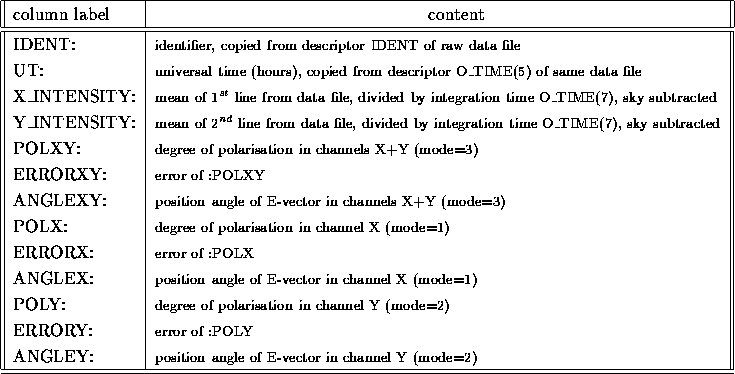
Table: Format of output table produced by REDUCE/PISCO
After having enabled the PISCO context (command SET/CONTEXT PISCO),
the basic reduction of PISCO data involves merely one command,
REDUCE/PISCO, which starts a routine (pisco.prg) solely consisting of other
MIDAS commands. So, the whole procedure can be followed when the
ECHO facility is enabled (see description for ECHO/ON or ECHO/FULL).
The essential steps are: (1) division of the data by the integration
time (stored in descriptor O_TIME), (2) subtraction of the sky and the offset
(using a sky measurement, if available, or a dark measurement), (3)
calibration (division by calibration file) and (4)
Fourier transformation. As is described in Appendix A of the PISCO Operating
Manual, the last step, a simple Fourier transform using the MIDAS command
FFT/POWER, is the core of the reduction of PISCO data.
The procedure is designed
to handle an entire set of data by operating on an input catalog and producing
a single output table in which each row holds the results for one data frame
in the input catalog. There are no free parameters except for a mode,
which can be set to 1, 2, or 3 depending on whether the two sky
channels X and Y shall be reduced separately, together, or separately and
together, respectively. Normally, the X and Y channel should be treated
together.

Table: Format of output table produced by REDUCE/PISCO
The program attempts an error estimate from the noise level in the Fourier-transform. The polarisation angles still have an arbitrary zeropoint and need to be transformed to a standard system by means of observations of standard stars. Apart from the comparison with calibration data, the results of REDUCE/PISCO should be final.
The output table is a standard MIDAS table so that all applicable table
commands can be used to further process the results. The columns of this table
are shown in Table ![]() .
.